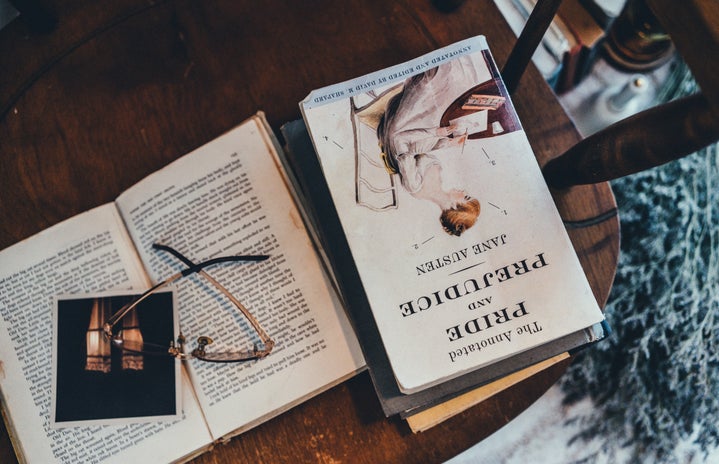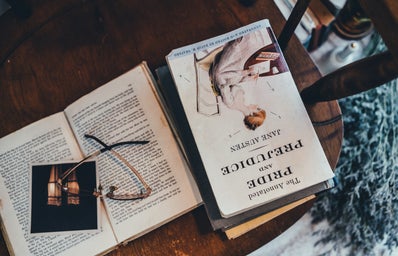Get ready to get your magnifying glass out and put on your trench coat! Spooky season is the perfect time to crack open a new read and get sucked into the world of detective sleuthing. If you’re looking for your next murder-mystery series with mind-boggling plot twists and a morally gray main character, “A Good Girl’s Guide to Murder” by Holly Jackson will have you hooked.
The first book from her trilogy follows high school senior Pippa Fitz-Amobi as she solves the murder case of Andie Bell for her senior capstone project. For the past five years, everyone in Fairview believed that Andie’s boyfriend, Sal Singh, murdered her and then committed suicide, but Pip was not so sure. In an attempt to prove Sal’s innocence, Pip begins digging into the closed case and soon finds herself uncovering secrets she never expected to know. With the help of Sal’s younger brother, Ravi Singh, they begin exploring the case, but someone in Fairview doesn’t want them to find out the truth and will stop at nothing to make sure of it.
The “Good Girl” Trope
At the beginning of her investigation, Pip follows in the footsteps of the stereotypical “good girl” trope; she’s a rule-follower, straight-A student, and Ivy-League bound. The “good girl” trope seen in media “embodies…classic idealized notions of femininity and she always does what she’s supposed to.” Being quiet, amicable, and agreeable are all qualities women are praised for.
Similarly, pretty and popular senior Andie Bell was beloved by the town and remembered as a paragon of virtue and purity. Everyone wanted to be her and be liked by her, but not everyone is as they seem. Underneath the facade of a pretty face hid secrets that she took with her to the grave.
However, even though she does everything she’s supposed to, good girls are punished or looked down on for that; society views her as “boring or not in touch with herself” because she echoes traditional ideals. This trope perpetuates the idea of women being two-dimensional stereotypes and “works to erase their more full complex humanity.”
No matter how perfect and proper good girls act to appease society, someone will always inevitably find a problem with their personality. It puts girls in a lose-lose situation, where even if they do everything they’re supposed to, they are still shamed or criticized for it because society doesn’t want girls to be in control of their narrative in media, which leads to a breaking point and good girls “going bad.”
The “Good Girl Gone Bad” Trope
The “Good Girl Gone Bad” trope is essentially just the reformed good girl breaking out of the box society kept her in and finding agency within herself. She feels liberated to express her true thoughts and feelings without worrying about what society will think of her, and “that sense of personal agency is the thing people most fear a girl getting.” Contrasting with the ever-agreeable good girl, this new iteration of her is unafraid to take up space and stand up for herself.
However, there is a difference between a good girl “going bad” and a good girl “becoming bad.” Often, girls are treated as good or bad, not based on the way they behave, but on how society perceives them. When a good girl goes bad, it’s characterized as a phase and simply her learning to stick up for herself, but when a good girl becomes bad, it’s a more permanent change to her personality and a result of how she’s been treated by society.
Despite her better judgment, Pip begins interviewing those who knew Andie when she was alive: friends, family, and her acquaintances. From them, she finds out that Andie’s seemingly perfect life was built off of a foundation of lies; Andie was plagued with insecurities that drove her to cut people down, and she was always caught up in drama. She was a typical high school bully with a sweet tooth for scandal. No one knew the real Andie Bell, not even those closest to her.
As secrets begin unraveling and her list of suspects grows longer, Pip’s investigation turns into an obsession, and she goes to questionable lengths to continue searching for clues, even if it puts her life in danger. Now, someone knows that Pip is starting to connect the pieces of the puzzle and begins leaving her threatening notes, warning her to stop for her safety. But Pip is determined to find out the truth, no matter what.
One aspect of the book that I loved most was how Pip’s character development subverted the stereotypical depiction of the “good girl” trope and redefined it to be empowering for young girls. Pip’s inherent goodness and commitment to doing the right thing guide her to make choices that, while they may seem impulsive at the moment, are motivated by her desire to tell the truth, no matter how twisted it may be. Her investigation strengthened her ability to stick to what she believed in, even if everyone around her doubted her because despite what they thought, she believed in herself. What are your spooky season reads for the fall? Let us know @HerCampusSJSU!


